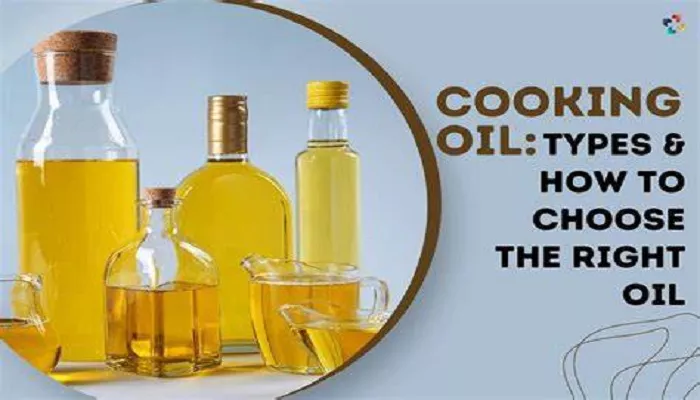Cooking oil is a must – have for every meal. It not only supplies essential nutrients to the human body but also acts as the “essence” in creating all kinds of delicious dishes. From soybean oil, peanut oil, sunflower oil, and rapeseed oil to lard and butter, there is a wide variety of edible oils. So, how can one select the healthy and suitable oil? Currently, Chinese residents consume a relatively large amount of cooking oil. How can we scientifically “cut down on oil” and boost our health? Ruan Guangfeng, the deputy director of the Kexin Food and Health Information Exchange Center, provided a detailed explanation.
Prioritize Vegetable Oils and Vary Your Choices
As a cooking ingredient, edible oil enhances the color and aroma of dishes while providing rich nutrition. Ruan Guangfeng explained that edible oil can provide the human body with essential fatty acids, vitamins, phytosterols, etc. Fatty acids are mainly divided into two types based on their structure: saturated fatty acids and unsaturated fatty acids. Among them, unsaturated fatty acids can be further categorized into monounsaturated fatty acids and polyunsaturated fatty acids. Edible oils contain fatty acids like alpha – linolenic acid and linoleic acid. These fatty acids cannot be produced by the human body but are crucial for life activities. A lack of these essential fatty acids can affect the body’s immunity, wound healing, vision, brain function, and cardiovascular health. Vitamins, especially fat – soluble ones like vitamin E, help with antioxidation and boost immunity. Phytosterols assist in lowering cholesterol.
Different edible oils have varying fatty acid compositions and thus distinct nutritional features. For example, olive oil, tea oil, and rapeseed oil are relatively rich in monounsaturated fatty acids. Corn oil and sunflower oil are high in linoleic acid, while flaxseed oil is abundant in alpha – linolenic acid and polyunsaturated fatty acids. Consuming only one type of oil for a long time may disrupt nutritional balance. Therefore, it is recommended to give preference to vegetable oils and regularly switch between different kinds. This approach is more beneficial for a balanced diet.
It’s important to note that when it comes to vegetable oils, palm oil and coconut oil should be consumed with caution. Although they are vegetable oils, their saturated fatty acid content is higher than that of many animal oils, approaching or exceeding 80%. Also, since each type of edible oil has a specific shelf life, it is advisable to buy small – package oils. This reduces the chance of the oil expiring and makes it easier to try different varieties.
Consider the Smoke Point When Choosing Cooking Oil
During daily cooking, many people face a common problem – oil smoking. Ruan Guangfeng explained that the lowest temperature at which oil starts to emit smoke during heating is called the smoke point. When oil smokes, it releases acrolein, which strongly irritates the eyes and respiratory tract. Moreover, cooking fumes, similar to haze particles in the air, increase the risk of lung cancer. When cooking, it is necessary to select oils with appropriate smoke points according to different cooking methods. For high – temperature cooking like stir – frying or deep – frying, choose oils with a high smoke point. For cold dishes, oils with a low smoke point are suitable.
The smoke point of edible oil is closely related to its processing method. Generally, refined vegetable oils have higher smoke points. This is because refining removes impurities from the oil, significantly increasing the smoke point. For example, the smoke point of crude soybean and peanut oil is about 160 degrees Celsius, which can reach over 230 degrees Celsius after refining.
According to relevant national standards, most edible oils are graded from one to four, with one being the highest quality. A higher – grade oil has a higher degree of refinement and fewer impurities. However, this doesn’t mean it has a higher nutritional value. Refining removes harmful impurities from crude oil, but it also leads to the loss of nutrients such as vitamin E, carotene, and squalene. First – grade oil, for instance, is highly refined, has few impurities, and a high smoke point, but it may lack some nutrients. Second – grade oil, with a lower degree of refinement, retains more natural components and usually has a stronger flavor.
To consume oil healthily, choosing the right type of oil is not enough; healthy cooking is also essential. Ruan Guangfeng pointed out that reasonable cooking methods can preserve the nutrients in food and prevent the production of harmful substances due to high – temperature frying. Some edible oils labeled with “Extra Virgin”, “Extra Extra Virgin”, or “cold – pressed” are generally unrefined. These oils have a pleasant aroma but a relatively low smoke point, so they are not suitable for stir – frying or deep – frying. They are perfect for making cold dishes.
Use an Oil – Control Pot and Adopt a Light Diet
Long – term excessive fat intake can lead to obesity and increase the risk of chronic diseases such as dyslipidemia, atherosclerosis, and coronary heart disease. Ruan Guangfeng shared that the “Report on the Nutrition and Chronic Disease Status of Chinese Residents (2020)” shows that the average daily cooking oil intake per person in China is 43.2 grams, far exceeding the recommended amount. Surveys indicate that over half of Chinese residents’ dietary fat comes from cooking oil. So, reducing cooking oil consumption is key to cutting down on fat intake.
It’s okay to alternate between different vegetable oils, but the important thing is to consume them in moderation. As suggested in the “Chinese Dietary Guidelines”, adults should consume 25 – 30 grams of cooking oil per day. In daily life, choose cooking methods like steaming, boiling, stewing, braising, blanching, stir – frying, and mixing, and use less frying and deep – frying to reduce oil usage.
Related topics


